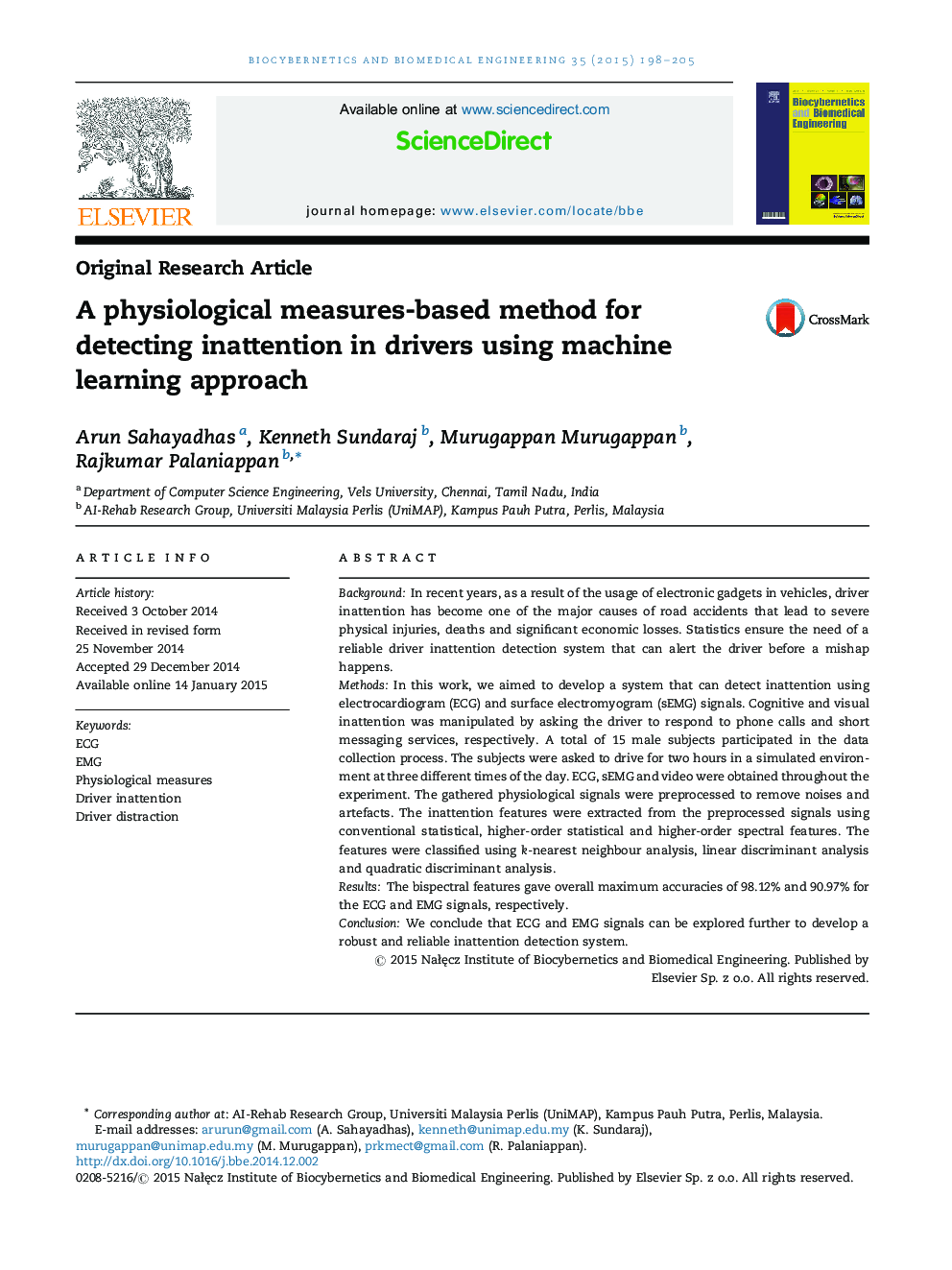| Article ID | Journal | Published Year | Pages | File Type |
|---|---|---|---|---|
| 5162 | Biocybernetics and Biomedical Engineering | 2015 | 8 Pages |
BackgroundIn recent years, as a result of the usage of electronic gadgets in vehicles, driver inattention has become one of the major causes of road accidents that lead to severe physical injuries, deaths and significant economic losses. Statistics ensure the need of a reliable driver inattention detection system that can alert the driver before a mishap happens.MethodsIn this work, we aimed to develop a system that can detect inattention using electrocardiogram (ECG) and surface electromyogram (sEMG) signals. Cognitive and visual inattention was manipulated by asking the driver to respond to phone calls and short messaging services, respectively. A total of 15 male subjects participated in the data collection process. The subjects were asked to drive for two hours in a simulated environment at three different times of the day. ECG, sEMG and video were obtained throughout the experiment. The gathered physiological signals were preprocessed to remove noises and artefacts. The inattention features were extracted from the preprocessed signals using conventional statistical, higher-order statistical and higher-order spectral features. The features were classified using k-nearest neighbour analysis, linear discriminant analysis and quadratic discriminant analysis.ResultsThe bispectral features gave overall maximum accuracies of 98.12% and 90.97% for the ECG and EMG signals, respectively.ConclusionWe conclude that ECG and EMG signals can be explored further to develop a robust and reliable inattention detection system.
